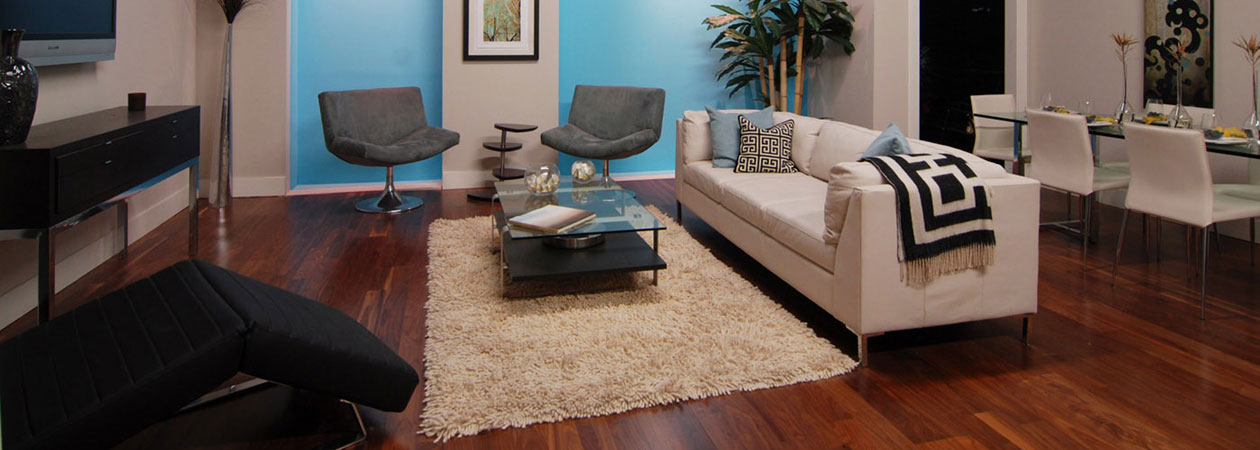Sales & Installations

Benefits of Hardwood Floors
Beautiful and long-lasting, hardwood floors make an elegant choice for nearly any room in your home. When choosing hardwood, the color, character, and construction type are the important factors to consider. The color of hardwood floors ranges from quite light to intensely dark—and everything in between. Naturally present in hardwood, grain variations help determine a wood’s “personality.” Dramatic grain suggests a rustic feeling. Historically, moderate grain variations are associated with the traditional, and hardwood with very little graining has a sleek, contemporary look.
There are two basic choices—solid or engineered. Solid planks are created from a single piece of wood while engineered planks are made from several layers of wood (with a core of plywood or HDF) and are designed to withstand higher levels of humidity. This means they can go in some rooms solid floors cannot (such as on concrete or in basements).
There are styles that convey the authentic look of wood or the classic appeal of ceramic tile. Various shades and finishes allow you to choose the wood look down to the species, and now laminates are mimicking hardwood even more. Some laminates offer beveled, distressed, and highly textured options—giving your laminate floor not only the look of hardwood, but the feel of it, too. Laminates are inherently “green,” because they use fewer resources and far less wood in their manufacture. And because they’re durable—some styles even offer 25-year warranties—you don’t have to replace laminate floors as often.
Installation Procedures
To make your hardwood flooring look good now and for a long time to come, proper installation is critical. Here’s the procedure an experienced installation professional will follow:
 Current flooring: A professional installer will evaluate your floor and subfloor construction and will know whether to remove the existing flooring or install on top of it. If it’s removed, the installer knows how much preparation is needed for the subfloor—like use of a leveling compound—or if a new subfloor should be placed over the old one.
Current flooring: A professional installer will evaluate your floor and subfloor construction and will know whether to remove the existing flooring or install on top of it. If it’s removed, the installer knows how much preparation is needed for the subfloor—like use of a leveling compound—or if a new subfloor should be placed over the old one.
 Moisture testing: Proper acclimation and moisture testing of the wood flooring and subfloor are required so floors won’t cup, buckle, or develop gaps later. Your installer will follow this critical step for either solid or engineered hardwood.
Moisture testing: Proper acclimation and moisture testing of the wood flooring and subfloor are required so floors won’t cup, buckle, or develop gaps later. Your installer will follow this critical step for either solid or engineered hardwood.
 Installation: Using the proper equipment, your installer will nail or glue boards in place, working from multiple cartons to create consistency in the look of the floor. When encountering unforeseen problems, experienced installers know how to solve them.
Installation: Using the proper equipment, your installer will nail or glue boards in place, working from multiple cartons to create consistency in the look of the floor. When encountering unforeseen problems, experienced installers know how to solve them.
 Overall quality: Professional installation ensures that your floor will look beautiful and perform well over time.
Overall quality: Professional installation ensures that your floor will look beautiful and perform well over time.


